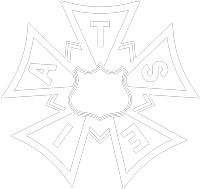Reprinted from Deadline Hollywood, article by David Robb
California’s expanded $330 million film incentives program hasn’t fully kicked in yet, but in its first full year has generated an estimated $1.5 billion in direct in-state spending, including $600 million in below-the-line wages, according to the California Film Commission’s latest progress report.
One of the expanded program’s specific goals was to induce TV shows to relocate here from other states, and by all accounts, it’s already been a major success. So far, six shows have relocated to California since the new program was enacted last year, including Veep, (which relocated from Maryland); American Crime (from Texas); Mistresses (from Vancouver); Secrets and Lies (from North Carolina), and American Horror Story and Scream Queens (from Louisiana). Together, they received nearly $51 million in tax credits, and spent more than $328 million in the state.
By comparison, during the seven years of the old $100 million-a-year program, only four TV series relocated here from out-of-state, contributing a combined $343 million in direct spending. “It is worthwhile to note the substantial economic value of luring relocating TV series,” the CFC report said, “which typically generate more consistent, longer-term employment compared to feature film projects.”
Enacted in January 2015, the new five-year program increased funding from $100 million a year under the old plan, to $330 million annually through 2020. During the first year of the new program, however, funding totaled only $230 million, because $100 million in funding had been reserved for the final year of the expiring, first-generation program.
During the seven years of the old plan, including the most recent fiscal year’s conditionally allocated tax credits, approximately $675 million in credits have been allocated or reserved for eligible projects. Projects that received those incentives are estimated to spend at least $5.5 billion directly, including an estimated $1.9 billion in qualified below-the-line wages.
On average, that’s about $786 million a year in direct spending, and $271 million a year in below-the-line wages – about half the amount generated in the first year of the new plan, even though it was only two-thirds fully funded. Once the full $330 million kicks in this fiscal year, the numbers are expected to increase even more – perhaps by as much as one-third more, which would put in-state direct spending at about $2 billion a year, and below-the-line wages in the neighborhood of $800 million a year. Which isn’t bad for a $330 million annual investment. And that doesn’t even include the indirect economic benefits that the state receives from tourism. “The motion picture industry is an essential source of economic activity, tax revenue, jobs, and tourism in California,” the report notes. According to the MPAA, it contributes $18 billion in wages while supporting 180,000 well-paying entertainment industry jobs that provide health benefits to its workers.
Just how well the new incentives program is doing is evident in several bellwether reports from Hollywood’s unions. “After one year,” the report states, “key entertainment industry labor organizations are reporting increased levels of employment. An analysis of hours worked by members of California’s below-the-line unions – Teamsters, IATSE, basic crafts, and others covered under the Motion Picture Industry Pension & Health Plans – shows a 12.5% increase for the first quarter of 2016 compared to the same period last year.
Employment data from SAG-AFTRA, meanwhile, shows that background performers working in scripted film and television in California enjoyed a 19.7% increase in daily employment from the first quarter of 2015 compared to the same quarter in 2016.
Teamsters Local 399 reports that members are working at “full employment” for the first time since 2007, and IATSE Prop Local 44 has seen a 4.9% growth in membership for the first quarter of 2016 compared to the same period in 2015. According to the report, the Prop Local “hasn’t experienced membership growth this substantial since the mid-1990s.”
In other words, the incentives are working — and then some.
